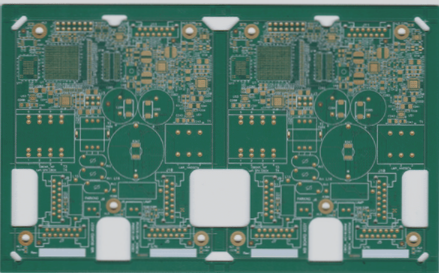1. The following is an overview of the soldering strength of electronic components within PCBA technology.
2. While examining the structural analysis of the Micro-USB connector, an intriguing soldering concept came to mind that I would like to share in this article.
3. The length of the metal shell soldering pins for the Micro-USB connector is typically just 0.8mm. This is due to the mobile phone board thickness, which is approximately 0.8mm to 1.0mm, whereas PCB companies often use a thickness of 1.6mm.
4. After the SMT factory uses reflow soldering for the Micro-USB connections, it is frequently observed that the solder in the through-holes of these metal shell pins is not fully filled. In some instances, only about 70% of the holes are filled.
5. The unfilled area in the inspection holes can measure about 0.3-0.5mm in depth. Does this affect the soldering strength of the Micro-USB? Can the PCB manufacturer be asked to fill these through-holes with solder or have them extend above the surface to enhance the soldering reliability?
6. When our R&D team encounters issues with components falling off, their immediate response is to approach us, requesting that the PCB factory increase the solder strength. Are we too quick to engage in this discussion, or…?

When faced with such an issue, Shenzhen Grand Power typically requests that the affected party bring the defective Micro-USB connector and the assembled circuit board to their facility for inspection. Almost every time, the Micro-USB connector detaches from the circuit board. This occurs because the company conducts plug-in and drop tests on this type of connector, establishing a level of reliability that must be addressed.
Upon examining these detached components along with the assembled circuit board, it was observed that the solder on the opposite side of the Micro-USB connector’s metal shell was intact. Therefore, even if the solder paste fills the through-hole completely, repeating the same test would still result in the Micro-USB connector falling off. This scenario is akin to burying a telephone pole in the ground, only for a sudden typhoon to topple it, while blaming the soil for being insufficient. The actual issue lies in either the pole not being buried deep enough or the typhoon being excessively strong; the amount of dirt beneath the pole is irrelevant.
So, what steps can we take to minimize the risk of telegraph poles being blown down by a typhoon?
1. Bury the telegraph pole deeper.
2. Provide additional supports alongside the poles.
The above two measures are practical solutions, so it’s clear you understand how to enhance the Micro-USB connector’s resilience against plugging and dropping!
1. Require the PCB supplier to extend the soldering legs of the metal frame (akin to burying the pole deeper). This depends on whether your product volume is significant enough for the supplier to create a custom Micro-USB connector with extended solder legs, which is also contingent on the thickness of your PCB.
2. Utilize external mechanisms to prevent displacement of the Micro-USB connector (similar to adding supports beside the poles). A common approach is to attach a metal frame around the Micro-USB connector, securing it to the circuit board mechanism, or to implement stronger structural elements in the product to support the Micro-USB connector.
Many individuals misunderstand the concept of soldering strength. The belief that “more solder equates to stronger joints” is not entirely accurate. It’s crucial to correct the idea that “soldering strength correlates with the area of the welded parts” and not to solely focus on replacing it. Regarding surface treatment of solder paste and circuit boards, two main points can enhance the soldering strength of components:
1. Increase the contact area of the solder—not the volume! Thus, adding a large quantity of solder does not necessarily enhance strength, akin to merely filling the solder pins with tin. A close inspection reveals that many Micro-USB connector suppliers design their soldering feet with added features like punched holes or textured surfaces to increase the solder’s contact area and thereby improve soldering strength.
2. Employ structural design to transfer force to other mechanisms for support. A common method is to create upright perforated pins for the Micro-USB metal shell, allowing forces to be transmitted to the PCB’s hole wall for greater support.




